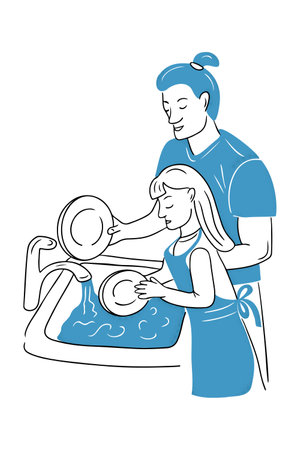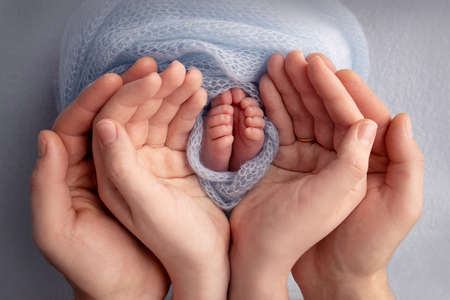Introduction to Water Birth
Water birth is a method of childbirth where a woman spends the final stages of labor, or even delivers her baby, in a warm water tub or pool. This approach offers a gentle and natural alternative to traditional labor and delivery settings. In recent years, water birth has been gaining popularity among expectant parents in the United States who are seeking more personalized and low-intervention birthing experiences. The idea behind water birth is that immersion in warm water can help ease pain, provide comfort, and create a calming environment for both mother and baby. Many families consider this option as they look for ways to be more involved in the birthing process and minimize medical interventions when possible. Hospitals, birthing centers, and even home birth midwives across the U.S. are increasingly offering water birth as part of their maternity care services. Understanding what water birth involves—and why it appeals to so many—can help you decide if it’s the right choice for your family.
2. Potential Benefits of Water Birth
Water birth is becoming increasingly popular in the United States, with many expectant parents drawn to its unique advantages. While every birth experience is different, laboring or giving birth in water may offer several potential benefits for both mom and baby. Here’s a closer look at what you might gain from choosing a water birth:
Relaxation and Comfort
Warm water can help relax your muscles, reduce stress, and create a soothing environment during labor. Many moms report feeling more comfortable and less anxious when immersed in a birthing pool. The buoyancy of the water supports your body weight, which can make it easier to move and find comfortable positions as contractions progress.
Pain Relief Without Medication
One of the top reasons families consider water birth is its natural pain-relieving effect. Studies suggest that immersion in water during labor can decrease the need for epidurals or other pain medications. The warmth and gentle pressure of the water may ease discomfort, especially in the lower back, and promote the release of endorphins—your body’s natural painkillers.
| Potential Benefit | Description |
|---|---|
| Relaxation | Warm water soothes muscles and reduces anxiety |
| Pain Relief | Less reliance on medical interventions for pain management |
| Mobility | Easier to change positions thanks to buoyancy |
| Calming Environment | Softer lighting, less noise, and fewer disruptions |
| Gentler Transition for Baby | Baby moves from amniotic fluid to warm water, which may be less stressful than air exposure |
A More Calming Environment for Mom and Baby
A water birth often takes place in a quieter, dimly lit setting with fewer interruptions from medical staff. This peaceful atmosphere can help moms feel more in control of their birthing experience. For babies, transitioning from the womb’s amniotic fluid into warm water can be smoother and potentially less traumatic than an immediate shift to open air.

3. Risks and Considerations
While water birth is often portrayed as a gentle and natural option, it is important to have an honest discussion about the potential risks and safety concerns associated with this method, especially within the context of American healthcare standards. Not every expectant mother or healthcare setting is suited for water birth, and understanding these factors is crucial for making an informed decision.
Potential Risks of Water Birth
| Risk | Description | Prevalence/Concern in U.S. Healthcare |
|---|---|---|
| Infection | There is a risk of infection for both mother and baby if the birthing tub or water is not properly sanitized. | Hospitals follow strict sanitation protocols, but home births may carry higher risks if guidelines are not followed. |
| Breathing Complications for Baby | The newborn could potentially inhale water if delivered underwater, though this is rare with proper technique. | This concern leads some U.S. hospitals to limit or avoid underwater delivery, allowing labor only in water. |
| Cord Rupture | The umbilical cord could snap during the process of lifting the baby out of the water. | This risk remains low but requires careful handling by trained staff. |
| Difficult Emergency Response | If complications arise (e.g., heavy bleeding or fetal distress), moving quickly from the tub to a bed can be challenging. | Most American hospitals have protocols for rapid transfer, but response times can vary at home or in birthing centers. |
Who Should Avoid Water Birth?
- Mothers with high-risk pregnancies (e.g., preeclampsia, multiples, breech position)
- Those with infections such as herpes simplex virus (active lesions)
- If premature labor (<37 weeks) is likely
Safety Measures in U.S. Healthcare Settings
- Certified nurse-midwives or obstetricians typically supervise water births in accredited hospitals and birthing centers.
- Strict cleaning and water temperature controls are enforced to minimize infection risk.
- Clear emergency protocols are established for rapid transfer out of the tub if needed.
Key Takeaway
While many women report positive experiences with water birth, it’s essential to discuss your medical history and preferences with your healthcare provider. Make sure that your chosen facility follows American College of Obstetricians and Gynecologists (ACOG) guidelines and has trained staff available at all times to ensure both maternal and infant safety during labor and delivery.
4. Who Is a Good Candidate for Water Birth?
Deciding whether water birth is right for you depends on several health and pregnancy factors. While water births can be a safe and empowering choice for many expectant mothers, not everyone is an ideal candidate. Here’s what you need to know about eligibility:
General Eligibility Criteria
| Eligibility Factor | Description |
|---|---|
| Healthy Pregnancy | No significant complications such as preeclampsia, gestational diabetes requiring medication, or placenta previa. |
| Full-Term Gestation | Typically between 37 and 42 weeks of pregnancy. |
| Single Baby | Most providers recommend water birth only for singleton pregnancies (not twins or multiples). |
| Head-First Presentation | The baby should be in the head-down (vertex) position before labor begins. |
| No Current Infections | Mothers should not have active infections such as herpes simplex virus or other conditions that could be transmitted in water. |
| No High-Risk Medical History | No history of cesarean delivery with a classical incision, uterine surgery, or other significant risk factors. |
Who Might Not Be Eligible?
- High-risk pregnancies: Those with conditions like uncontrolled hypertension, preterm labor, or certain fetal concerns may be advised against water birth.
- Multiple gestations: Women expecting twins or more are generally not recommended for water birth due to increased risks.
- Breech babies: If your baby is not head down close to delivery, a water birth may not be advised.
- Preterm labor: Labor before 37 weeks usually disqualifies you from water birth options.
- Epidural anesthesia: If you require an epidural, you will not be able to remain in the tub during labor and delivery.
Consulting with Your Provider
If you’re interested in a water birth, it’s important to discuss your medical history and pregnancy progress with your healthcare provider. They can help determine if you meet the criteria and recommend the safest options based on your individual needs. Every birthing center or hospital may have slightly different guidelines, so early communication is key to planning your preferred birth experience.
5. The Water Birth Process: What to Expect
Understanding the water birth process can help you feel more prepared and confident in your choice. Whether you’re planning a hospital, birthing center, or home water birth in the U.S., here’s a step-by-step outline of what typically happens, along with staff roles and common equipment used.
Step-by-Step Water Birth Process
| Step | Hospital | Birthing Center | Home |
|---|---|---|---|
| 1. Arrival & Admission | Nurses assess labor progress; paperwork completed | Midwives greet family; health checks performed | Doulas/midwives arrive; review birth plan |
| 2. Setting Up the Tub | Hospital-grade birth tub filled and checked for temperature (97-100°F); sterilized equipment provided | Specialized birthing tubs ready; midwives monitor water conditions | Portable birth pool assembled and filled; family may assist set-up under guidance |
| 3. Monitoring & Support | Nurses and OB/GYNs monitor baby and mom’s vitals; intermittent fetal monitoring | Midwife and nurse provide continuous support; regular checks on well-being | Certified midwife or nurse monitors progress; partner/doula offers emotional support |
| 4. Labor Progression in Water | Pain management options discussed; movement in tub encouraged for comfort | Mother uses various positions; natural pain relief methods supported | Mother guided through position changes as needed; calming environment maintained |
| 5. Delivery in Water (if safe) | If criteria met, OB or midwife assists delivery in tub; baby brought up gently after birth | Midwife supports baby’s emergence underwater before surfacing for first breath | Midwife helps guide baby out of water safely; immediate skin-to-skin contact encouraged |
| 6. Immediate Post-Birth Care | Nurses check mother and newborn, assist with placenta delivery, and monitor recovery in or near the tub as appropriate | Newborn assessments, cord clamping, and breastfeeding support provided by midwives | Midwife provides newborn assessment, assists with placenta delivery, and ensures both are stable |
| 7. Transition Out of Tub & Continued Care | Mother helped out of tub when ready; transferred to bed for continued monitoring | Tub exit at family’s pace; ongoing support as needed | Tub emptied/cleaned by assistants or family; postpartum care continues at home |
Main Roles of Staff During Water Births
| Role/Title | Main Responsibilities during Water Births in U.S. |
|---|---|
| OB/GYN (Hospital) | Oversees safety, manages complications, delivers baby if necessary. |
| Nurse (Hospital/Birthing Center) | Makes health checks, assists with pain relief, supports mother throughout process. |
| Certified Nurse Midwife (All Settings) | Main caregiver for low-risk pregnancies, guides labor and delivery in water. |
| Doula (Optional All Settings) | Provides emotional support, comfort measures, advocacy. |
Common Equipment Used for Water Births in the U.S.
- BPA-free inflatable or hospital-grade birthing tubs/pools (deep enough for full immersion)
- Sterile thermometers to monitor water temperature (97–100°F recommended)
- Covers/sheets for privacy and warmth after birth
- Sterile gloves and waterproof medical supplies for staff use
- Suction bulbs or neonatal resuscitation equipment (in case of emergency)
A Few Tips:
- Your healthcare provider will determine if it’s safe to deliver your baby in the water based on labor progress and any risk factors that develop.
- If complications arise at any point, you may be asked to leave the tub for further medical attention.
The experience of a water birth can vary depending on your chosen setting but generally follows these steps to maximize safety while promoting a calm and empowering environment for families welcoming their new baby.
6. Questions to Ask Your Healthcare Provider
When considering a water birth, open and informed communication with your healthcare provider is crucial. Whether you are working with an OB-GYN, midwife, or a specialized birth team, asking the right questions helps ensure safety, comfort, and clarity throughout your birthing experience. Below are essential questions and discussion topics to guide your conversation:
Key Questions for Your Birth Team
| Topic | Questions to Ask |
|---|---|
| Experience & Training |
|
| Eligibility & Risks |
|
| Facilities & Equipment |
|
| Pain Management & Comfort |
|
| Emergency Procedures |
|
Additional Topics to Discuss
- Your provider’s philosophy on water birth compared to other birthing options
- The support roles of your partner, doula, or family members during a water birth
- Cultural preferences or personal wishes regarding labor and delivery
Understanding Hospital or Birthing Center Policies
Bearing in mind that policies vary from state to state and facility to facility in the U.S., its important to ask:
- Does my insurance cover water birth services?
- Are there restrictions on who can be present in the room during a water birth?
Your Next Steps
By preparing these questions ahead of time, you’ll be better equipped to make informed decisions about your birthing plan. Remember, every family’s needs are unique—don’t hesitate to seek clarification or voice your concerns as you explore whether water birth is right for you.
7. Preparing for a Water Birth in America
Planning a water birth in the United States requires thoughtful preparation and understanding of local practices, regulations, and resources. Here are practical tips to ensure a safe and positive water birth experience:
What to Bring to Your Water Birth
| Essential Items | Why You Need Them |
|---|---|
| Swimsuit or sports bra | For comfort and modesty during labor |
| Towels (large and small) | For drying off mother and baby after delivery |
| Waterproof sheet or mat | To protect surfaces around the birthing pool |
| Snacks and hydration drinks | To maintain energy during labor |
| Music or relaxation aids | To create a soothing environment |
| Change of clothes for mom and partner | For comfort after the birth |
| Camera or phone for photos/videos | To capture special moments (if permitted) |
| ID, insurance card, and birth plan document | For admission and communication with staff |
Finding Qualified Water Birth Providers
Selecting the right provider is essential. In America, water births may be attended by certified nurse-midwives (CNMs), licensed midwives (LMs), or some obstetricians, depending on state regulations and hospital policies. To find a qualified provider:
- Check Credentials: Look for providers certified by organizations like the American College of Nurse-Midwives (ACNM) or the Midwives Alliance of North America (MANA).
- Interview Potential Providers: Ask about their experience with water births, emergency protocols, and outcomes.
- Tour Facilities: Visit hospitals or birthing centers offering water births to see equipment, cleanliness, and atmosphere.
- Read Reviews: Use websites such as Yelp, Healthgrades, or local mom groups to gather feedback from other families.
Navigating Insurance & Hospital Policies
| Consideration | Description / Action Steps |
|---|---|
| Insurance Coverage | Contact your insurance company early to confirm if water birth is covered at your chosen facility. Some plans may cover only hospital-based water births, not home births. |
| Hospital/Birthing Center Policies | Ask about their eligibility criteria for water birth (such as gestational age, maternal health conditions) and any restrictions regarding who can be present. |
| Prenatal Classes | Select classes specifically focused on water birth to learn techniques, safety protocols, and pain management strategies. |
| Pandemic/Emergency Protocols | If applicable, inquire about any changes in policy due to public health situations that could impact support people or use of birthing pools. |
Your Water Birth Checklist: Key Steps Before Delivery
- Create a detailed birth plan.
- Select your provider and confirm availability for water birth.
- Tour your chosen facility and review their requirements.
- Prenatal visits: Discuss any medical conditions that might affect eligibility.
- Packing: Prepare your bag using the checklist above several weeks before your due date.
- Communicate with your support team about their roles during labor and delivery.
- Stay informed: Keep up-to-date with any changes in insurance coverage or hospital policies as your due date approaches.
The Bottom Line on Preparation in America:
A successful water birth experience depends on planning ahead—choosing qualified professionals, preparing all necessary items, understanding local policies, and maintaining open communication with your healthcare team. By taking these steps, you can approach your water birth with confidence and peace of mind.


